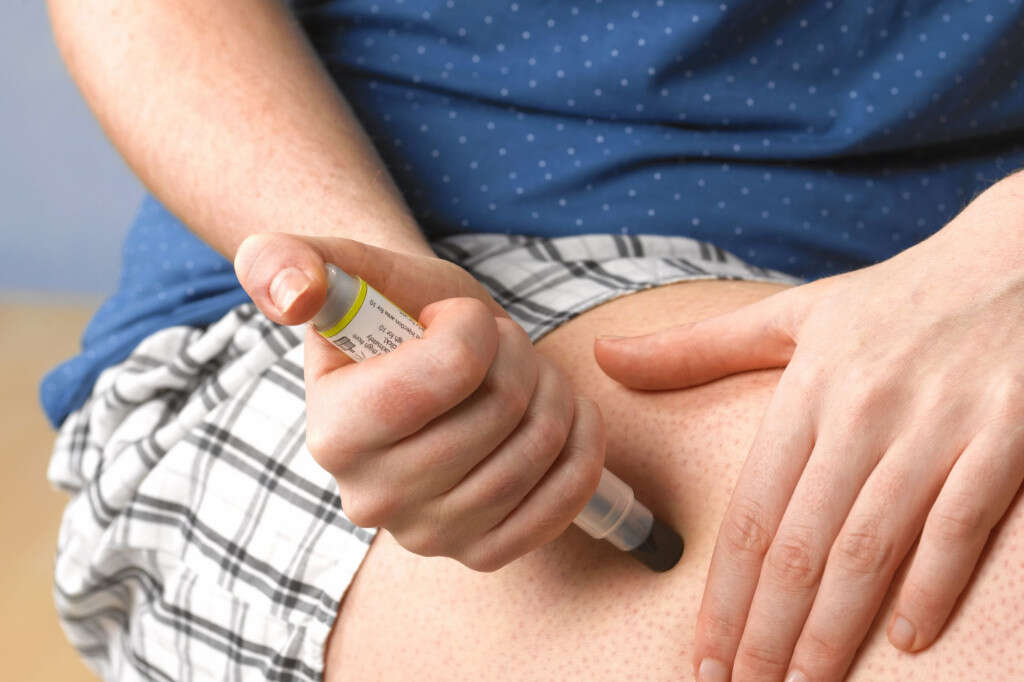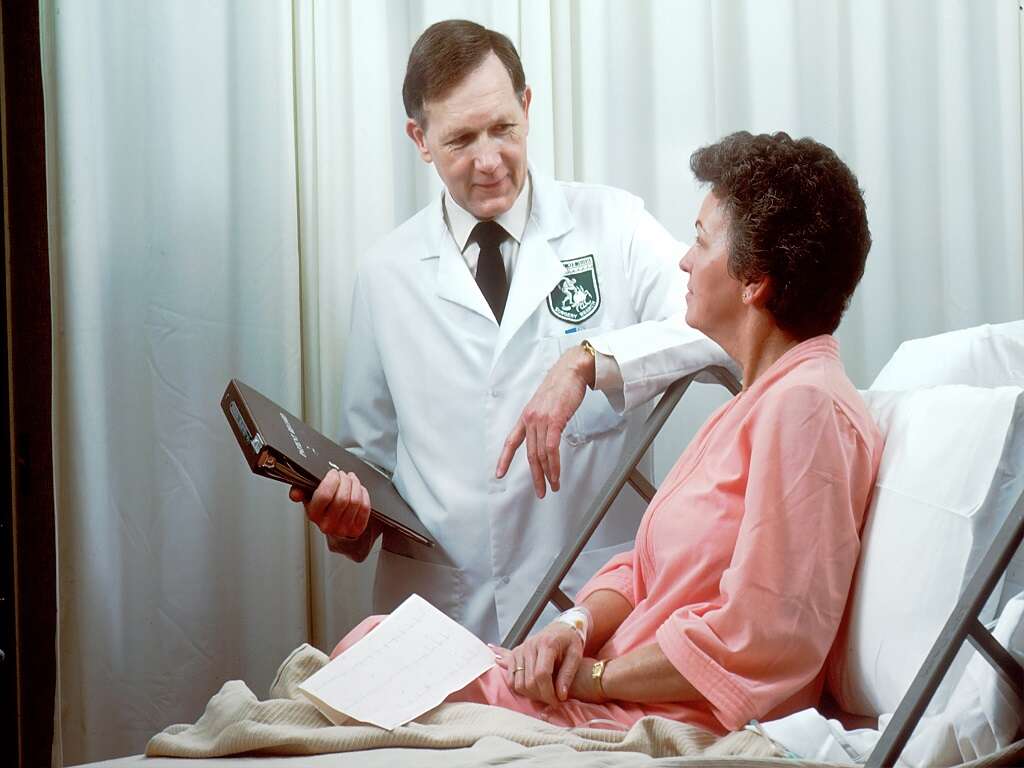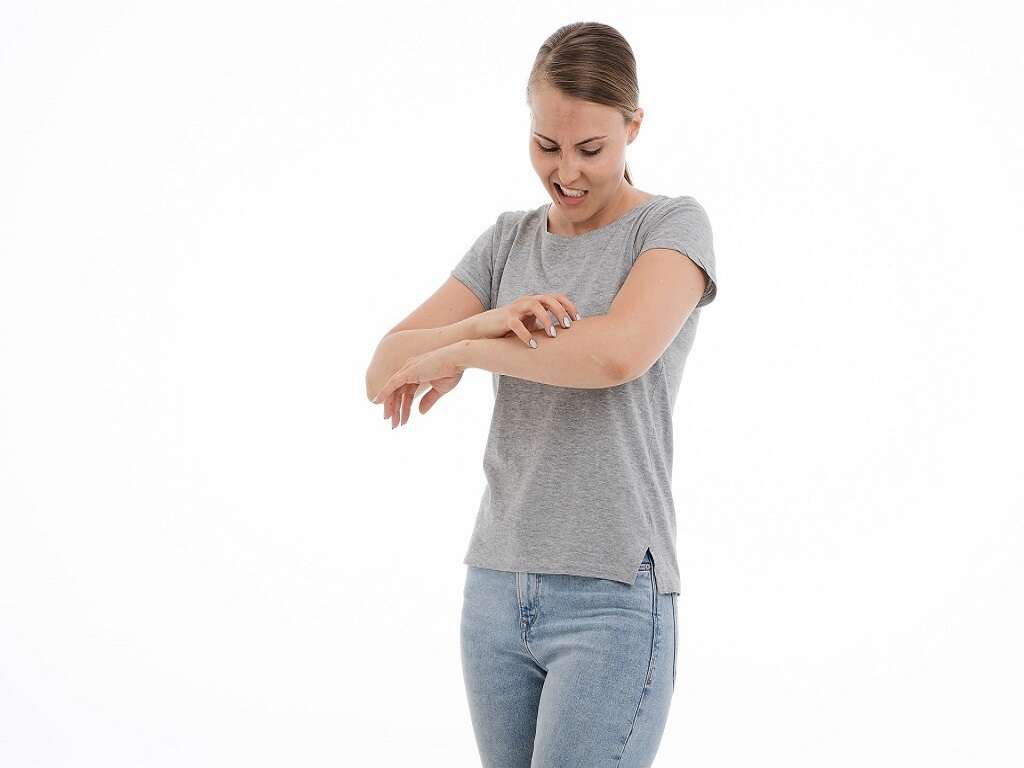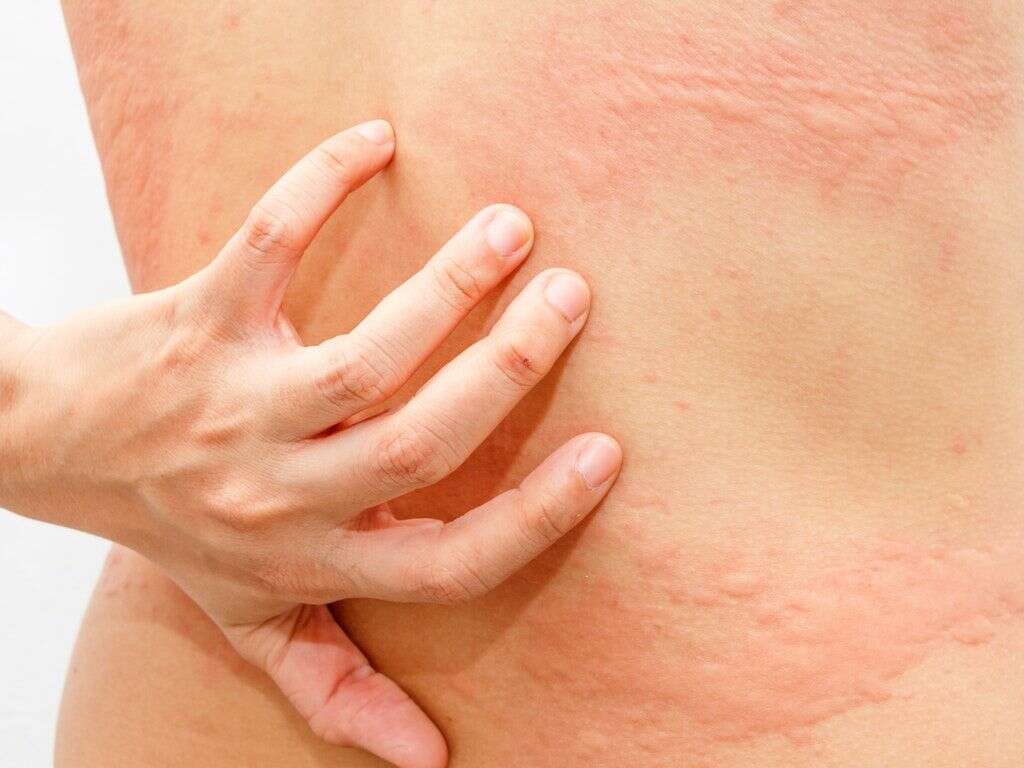10 Symptoms of Hives
The world around us is full of pathogens and substances that could be harmful to us. The good news is that our immune system works tirelessly to protect us, fighting off disease and toxins even when we sleep. Sometimes, though, our body can react to substances that do not pose a threat to us. This is what we call an allergy and they affect people in different ways.
Allergies cause the body to release histamines, which are compounds that help the immune system. This release of histamines causes a range of symptoms, including hives in some people. Hives are swollen, red rashes that can be very uncomfortable.
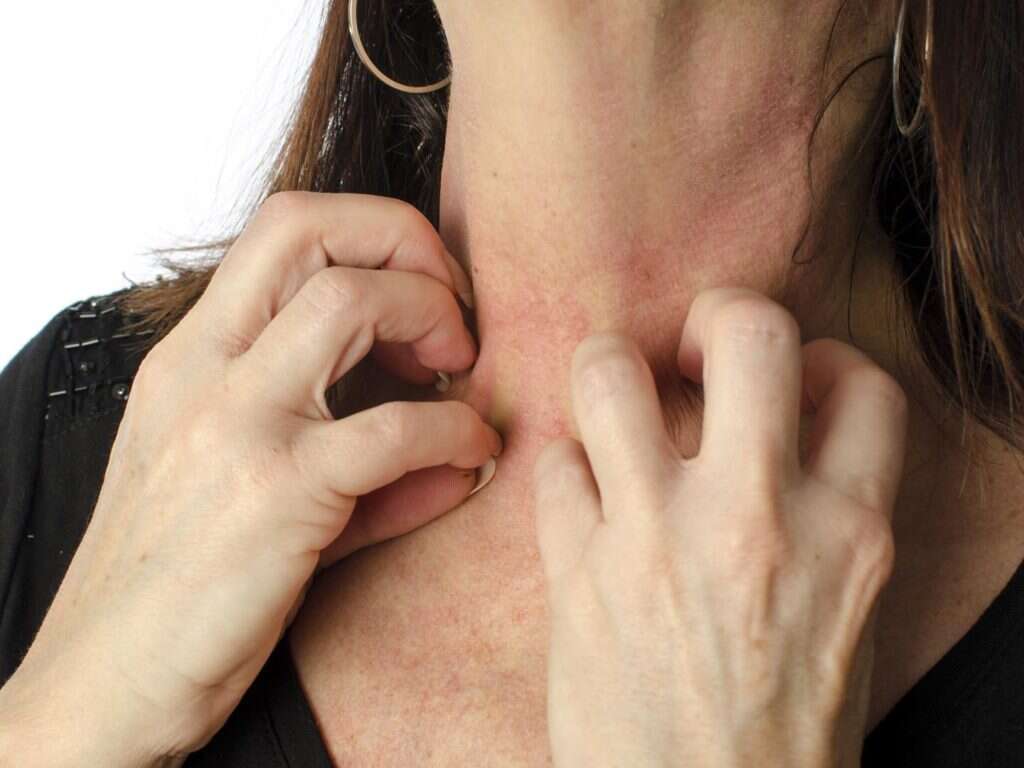
Symptom #1: Extremely Itchy
An itch is a reaction that is caused by something irritating the skin. It can be very useful in alerting you to the presence of an irritant. It can also be detrimental because excessive scratching can lead to breaks in the skin and possible infections. If you do have an itch, it is recommended that you use all your willpower to avoid scratching it.
Some itches are easier to resist than others, though, and hives can be very difficult not to scratch. The sensation can be unbearable at times, making it a very unpleasant condition to be suffering from. You can find various remedies and methods to help relieve the itch symptoms and prevent scratching.

Symptom #2: Varied Locations
Usually, when we get a rash, the rash will be in one place. The initial location will often vary according to what is causing the rash, and the location can sometimes help a doctor to reach a correct diagnosis. The location of the rash can often be treated with remedies to help relieve the symptoms, if not the cause.
Hives, though, can be quite different in that they can move from one part of the body to another. They can gradually travel all over the body and will also change size and shape as they go. You should let a doctor know if they move to help diagnose the condition.
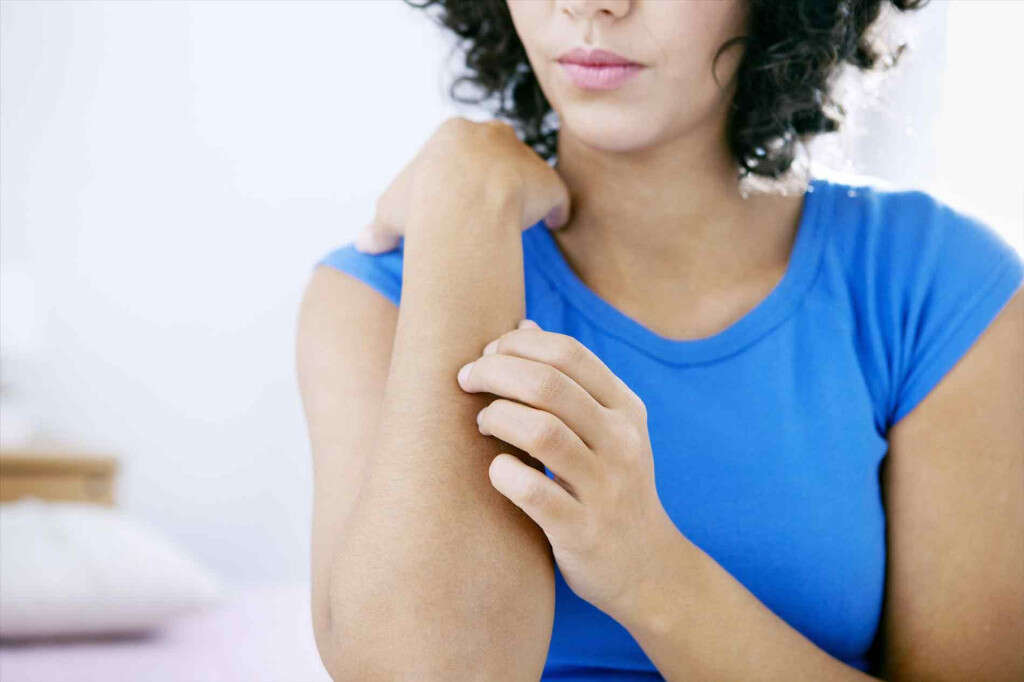
Symptom #3: Oval Shaped
The shape of a rash can also be instrumental in helping a doctor to reach a correct diagnosis. Many rashes will appear to take no particular shape but instead affect a general area of the skin. Others, though, can be far more distinct with clearly visible boundaries.
Hives tend to have boundaries that are clear to see and they also tend to take on a roughly oval shape. They can also sometimes be more elongated and almost worm-like. Hives will also tend to merge together, creating larger hives. In many cases, they will cover large areas of the surface of the skin.
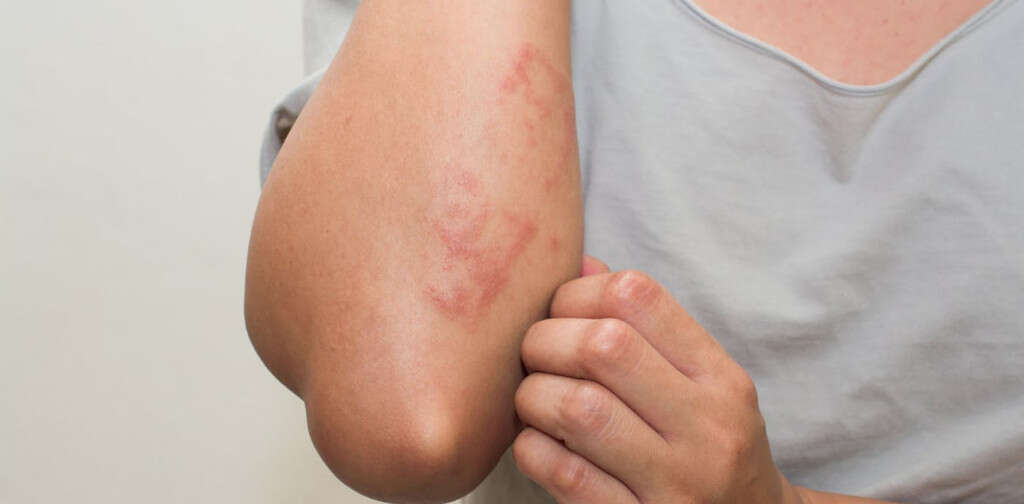
Symptom #4: Flesh Colored or Red
Another tell-tale sign that helps a medical professional to identify which type of rash they are dealing with is the color. A rash can range from being barely indistinguishable from the natural color of the patient’s skin to very dark or light patches that clearly stand out.
Hives tend to be a similar color to the patient’s flesh, although they can also become very red at times. The hives and the surrounding skin can also become redder from excessive scratching because of the itchiness. The colors can also help the doctor to clearly tell the extent of the rash or hives.

Symptom #5: Appears In Batches
Some rashes will be found only in a small area of a specific part of the body. There will often be a single rash with no other signs of a rash nearby. Sometimes, though, the rash can be widespread with multiple rashes covering a large area of the body.
Hives will often occur as a batch of welts in a particular area. These welts will often appear to grow large to merge into others, sometimes forming a single, large welt. It is not uncommon for the welts to cover large areas of the body, whether as batches of smaller welts or just a few larger welts.
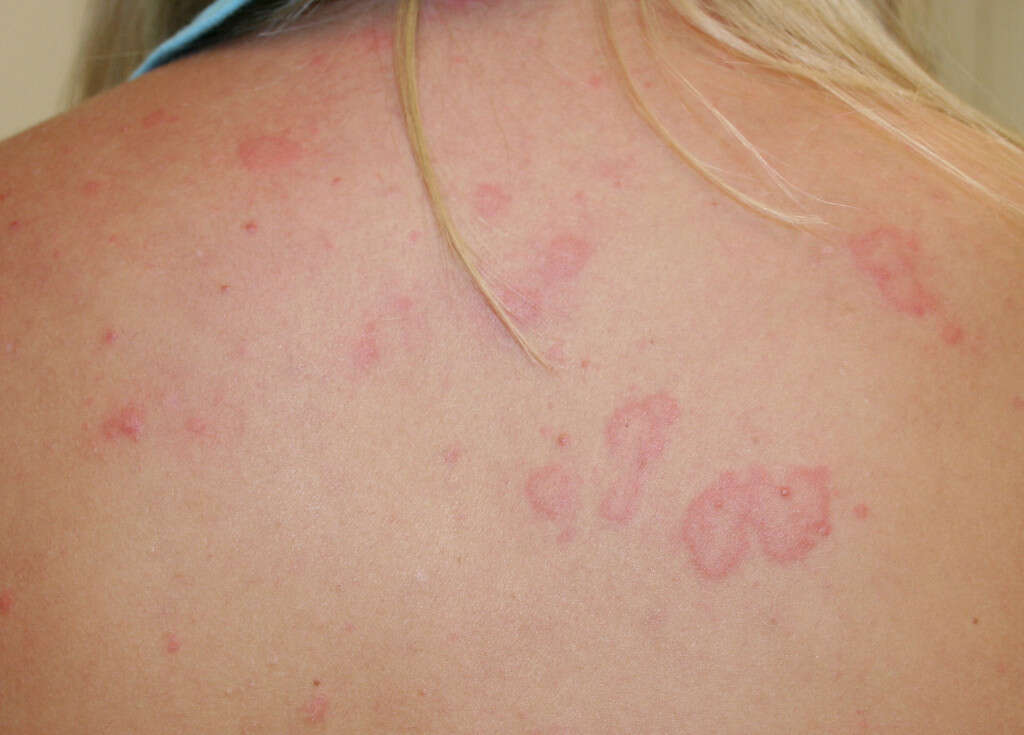
Symptom #6: Frequency Of Appearance
When a rash arrives, it is usually there until the condition causing it has been treated, although the rash itself can sometimes be treated before the cause. In most cases, the rash will resolve in just a few days, but some conditions can cause rashes that stick around for longer.
Hives are quite unusual, though, in that they can disappear and reappear for no apparent reason. They will usually disappear altogether within 24 hours or so but they can come and go several times in that period. In severe cases, though, hives can remain with a patient for months or even years.

Symptom #7: Elevated Welts
Quite often, a rash will appear visually as little more than a discoloration of the skin. Others can cause small bumps on the skin or flaking. Their appearance can vary considerably, and some are distinct enough to help medical a professional make a correct diagnosis.
Hives are quite distinct in that they are raised quite significantly from the surface of the skin. The welts will be flat on top, forming what could be considered a plateau. When their color contrasts with the skin, the welts can be very noticeable indeed.
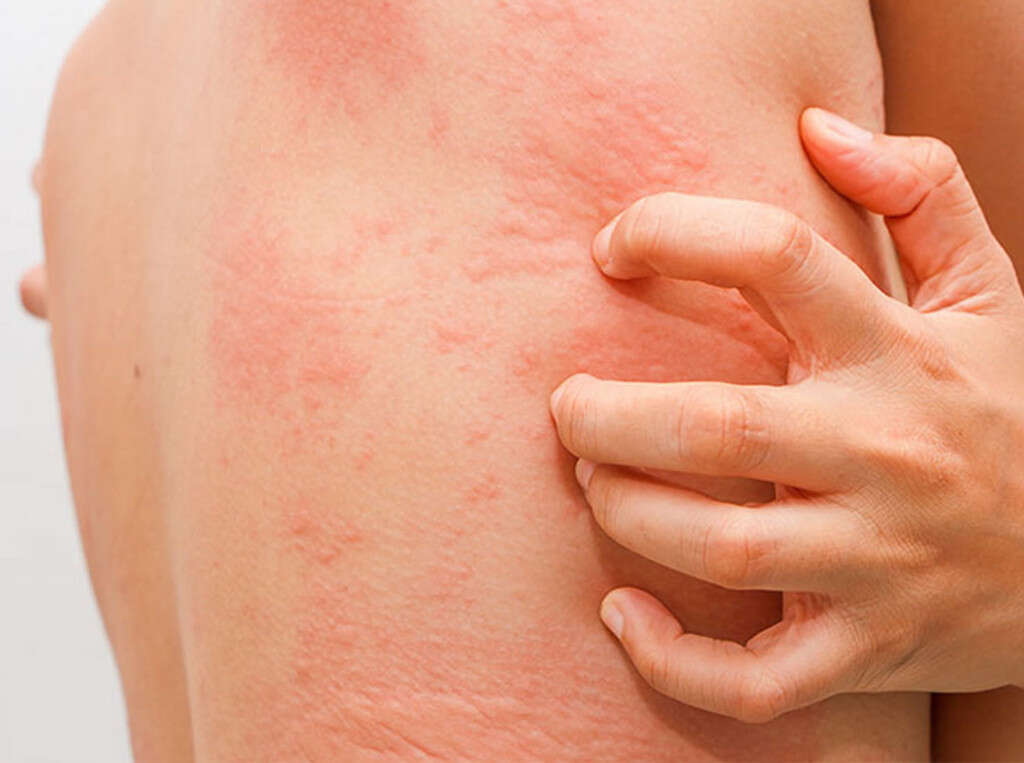
Symptom #8: Warm To Touch
The sensations that patients experience with rashes can vary considerably. Itching is perhaps the most common symptom of all, but patients can also experience pain, heat or numbness. These additional sensations can help to make the rash even more unbearable than it already is.
The welts associated with hives will often feel warm to the touch. In some cases, they can also be quite painful, adding to the already unbearable itchiness. You should be able to find a range of remedies and methods that can help you soothe the symptoms. You should check with your doctor before using any remedies.

Symptom #9: Nausea
Hives can be the result of a wide range of allergens. Allergens can cause many reactions ranging from a mild irritation to severe illness. While hives are often not associated with symptoms aside from the itchiness and pain, they can have other symptoms such as nausea.
If you do have hives and you are feeling nauseous, it is a sign that you are experiencing a bad reaction to an allergen. Reactions to allergies can be fatal and advanced symptoms should not be taken lightly. Nausea accompanied with hives is a sign that you should seek emergency medical assistance.

Symptom #10: Anaphylactic Shock
Hives are a good sign that you have come into contact with something you are allergic to. Different people react to different allergens in different ways. The vast majority will develop a rash, such as hives, but not experience anything worse. Some people, though, will react in a way that can be very dangerous.
A severe reaction to an allergen causes the body to release a flood of chemicals. These chemicals can cause the body to go into shock, specifically anaphylactic shock. This type of reaction can be deadly, so you should waste no time in getting emergency medical assistance should one occur.
